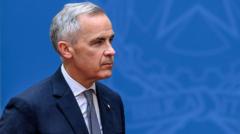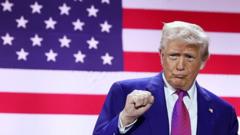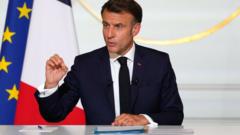The Canadian federal election on April 28, 2025, is marked by significant shifts in public sentiment and party standings, with the Liberal Party gaining traction under Prime Minister Mark Carney’s leadership as voters react to external pressures, particularly from the U.S. administration.**
Canada Faces Pivotal Election Amid U.S. Pressures and Political Realignments**

Canada Faces Pivotal Election Amid U.S. Pressures and Political Realignments**
As Canadians head to the polls, the shadow of President Trump's economic policies looms large over the election, reshaping party dynamics and voter concerns.**
Canadians are casting their votes today in a crucial federal election that will determine the nation's leadership and its future approach to the mounting pressures from President Trump. Historically, Canada’s Conservative Party was viewed as the frontrunner, but recent trends reveal that the Liberal Party, now led by Prime Minister Mark Carney, has gained substantial ground. Polling prior to the election indicated a competitive race, with Carney positioning himself as a stabilizing force amid growing fears of U.S. tariffs causing economic turmoil.
The political landscape transformed dramatically following the resignation of former Prime Minister Justin Trudeau, leading to a surge in support for the Liberals as they navigate the intricate relationship with Trump, who has notably threatened Canadian sovereignty. A series of polls indicated that Carney's extensive experience as an economist would better shield Canada from U.S. economic volatility compared to Conservative leader Pierre Poilievre, whose policies resonate with Trump’s deregulation agenda.
Competing parties include the left-leaning New Democratic Party and the Bloc Québécois, both of which are projected to secure minor representation in what has largely become a two-party contest. Both Liberal and Conservative candidates are advocating for economic measures amid rising cost of living concerns, particularly in urban centers where housing prices have reached alarming highs.
Despite immigration policy initially dominating discourse, public focus has shifted to immediate economic concerns. A growing sentiment against high immigration levels has consequently given rise to strategic voting among traditionally left-leaning constituents who fear a Conservative government could exacerbate existing economic vulnerabilities.
As Canadians navigate the complexities of election day across six time zones, results are expected to emerge late tonight. Analysts highlight the ongoing influence of Trump on Canadian political dynamics, emphasizing that the election's outcome may redefine Canada’s stance in North America if it continues to grapple with U.S. pressures moving forward.




















